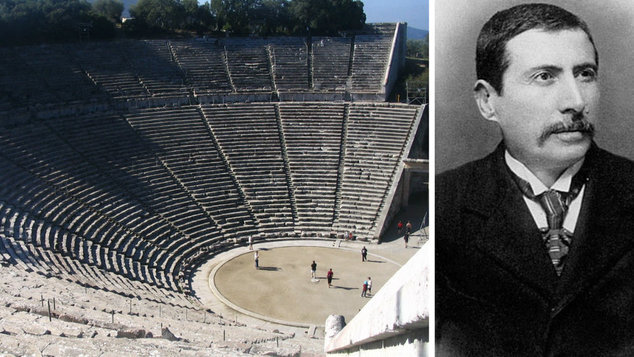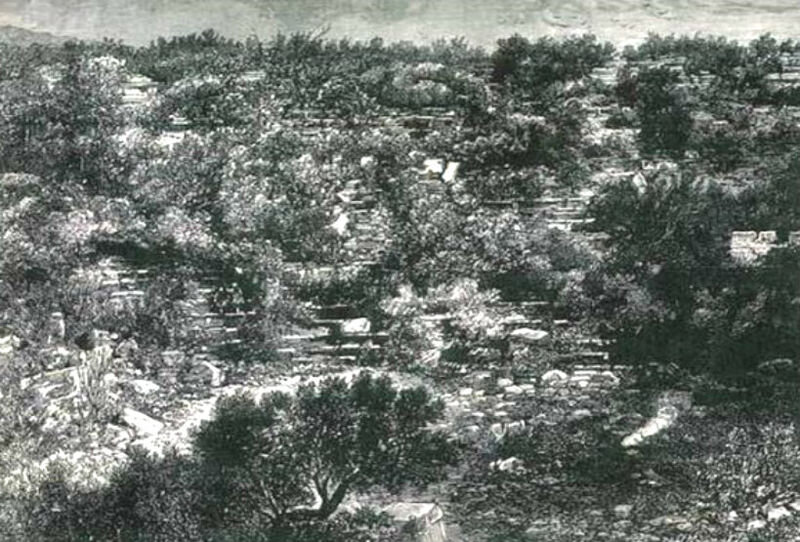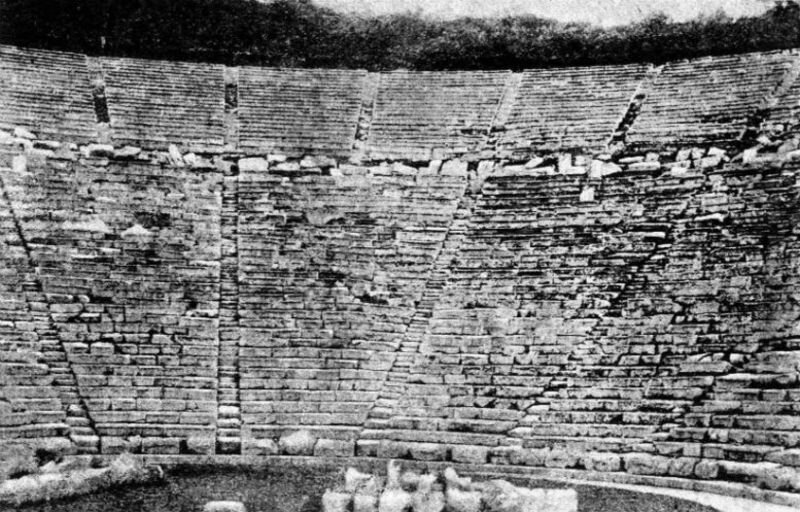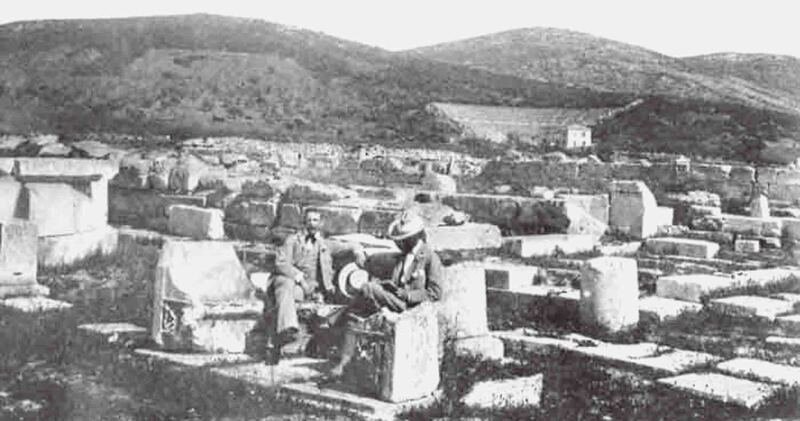Panagis Kavvadias was the Kefalonian archeologist who, from 1881 to 1883, brought to the surface the ancient theater of Epidaurus buried on the slopes of Mount Kinarteion.

For several decades (he died in 1928) he brought to light the many and important finds of the long excavations of the sanctuary of Asclepius.
The following text is an excerpt from the publication of Epameinondas Branopoulos in the journal “Archeology” (issue 12, August 1984) and refers to the excavations in the Argolic Theater.
When Panagis Kavvadias – a distinguished Greek archeologist who had ordered as one of the aims of his life the discovery of the antiquities of Epidaurus and the foundation of the museum there – went to Epidaurus on 15 March 1881, he intended to locate the ancient theater and then, if possible, to begin its excavation. Before doing so, he had studied all the relevant information he could find in the ancient writers. He had focused more on what Pausanias had written when he visited the theater in the 2nd century AD.

Kavvadias did not take long to locate the theater, for the shape of the cavity – and only this – was obvious. But the place of the theater had turned into a forest, and so dense that, as he relates in the minutes of the Archeological Society in 1881, he was by no means able to penetrate it and climb to the top of the concave theater. The next day the cutting down of the trees by his workmen began, which after a week was done in the whole area of the theater.
In vain, however, Kavvadias waited for the cave to appear before him. For in its place he saw a hillside, formed by the soil that had fallen away over the centuries and accumulated to a thickness of about six feet. So, a long and systematic work had to follow; the soil was removed, the hollow was cleaned, and the main parts were excavated.
In addition, many of the overturned seats were moved to their original positions, and the walls of the stage buildings and the entrances to the theater were exposed as far as the gates. During the excavations, it was determined from a statue of Roman times found near the stage, that the theater was flourishing until the last Roman period. After the predominance of Christianity – but it is unknown exactly when – began its gradual embankment and decline.

According to Kavvadias, it seems that in the beginning the semicircular wall surrounding the hollow was demolished. Due to logging or other reasons, the landslide of the earth masses of Mount Kinartio covered most of the cavity. Later, a great earthquake followed, which is testified by the way the stones of the platform fell. The quake damaged the ledge that divided the cavity into upper and lower zones, and most of the seats were displaced. Then the scene seems to have fallen.
After that, the tent seems to have been built and served as a residence.
In the 18th century, the English traveler Chandier visited the region of Epidaurus and found the theater covered with bushes that had grown in the soil accumulated over the tribunes. He is said to have carried a marble throne and many statues from the theater to Argos and Nafplio.

The accumulation of earth and the sprouting of bushes and later of trees concealed the theater and preserved it from other disasters as well as from the furnace of the Turkish period, in spite of the roots of the trees which grew between the joints of the stones and displaced and destroyed many seats.





